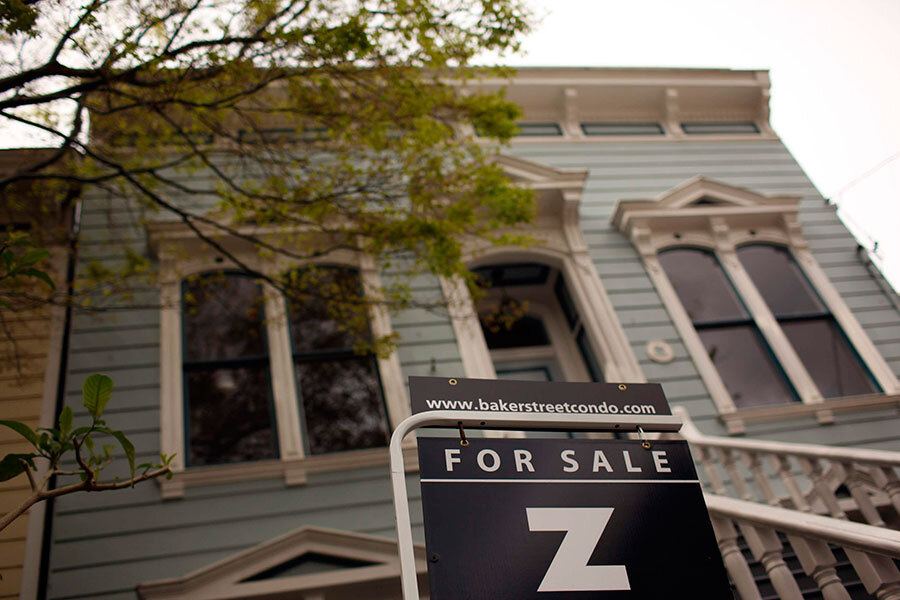California's extreme economy creates a new class of 'poor'
Loading...
| LOS ANGELES
Only in California, it would seem, could Muhammad’s way of life be considered “poor.”
His monthly income is $4,000 to $5,000. But in San Francisco’s Ocean Beach neighborhood, he needs every penny. The rent for his one-bedroom apartment (for three children and his wife) is $2,200, and Muhammad has to take every job that comes his way, often working 12- to 15-hour days.
“I think I’m one job away from what people would consider poverty,” says Muhammad, who asked that his last name be omitted. “But yeah, there’s an underlying feeling of being impoverished.”
The struggles of working families to make ends meet amid rising housing and child care costs is well known. The Census Bureau has even put a name on it: the supplemental poor. And California has a supplemental poor problem.
The Golden State's supplemental poverty rate sits at 20.6 percent – more than five percentage points higher than the traditional poverty measure. That's the biggest difference for any state in the country, save Hawaii.
It is the product of a situation that is particularly Californian, but which holds lessons for other states. Call it the extreme economy – a high concentration of Silicon Valley tech moguls and millionaires help drive up the costs of living on one end, creating challenges for a disproportionately large population of supplemental poor on the other.
Few states can replicate both California's soaring wealth and deep poverty. But the pattern of an economy amplified at the extremes is not a uniquely California phenomenon. From New York to New Jersey to the District of Columbia, high costs of living have driven up the ranks of the supplemental poor, leaving an economy where even a middle-class income is now barely enough to get by.
“I don’t think [the trend is] unique to California,” says David Grusky, director of the Center on Poverty and Inequality at Stanford University. “There are other zones in the country that are experiencing very high housing costs and the same sorts of effects can be expected.”
California vs. Idaho
Unlike the official poverty standard, the supplemental measure – which the Census Bureau began calculating in 2009 – takes into account more than just a family’s pre-tax cash income and the minimum it would cost to provide a healthy diet for each family member. It includes expenses like housing and child care, as well as resources such as food stamps, housing vouchers, and other cash and near-cash transfers.
The US poverty rate was 13.5 percent in 2015; the supplemental rate was 14.3 percent.
In some places, such as Idaho, Indiana, and Maine, the supplemental measure shows a lower poverty rate than the official standard.
But the opposite is true in many places throughout the United States, where the supplemental poverty threshold shows a different picture of poverty, according to the latest Census data, released this month.
California is a window into the trend. The average monthly rent in California is $1,250, twice as high as the national average. A home in the Golden State costs about $440,000, compared with about $180,000 nationally.
“In California, the cost of living is sharply higher once we take housing costs into account, so extra resources from tax credits, housing, and food assistance don’t stretch far enough to move residents above poverty,” writes Caroline Danielson, a senior fellow at the Public Policy Institute of California, in an email.
$700 for child care
Child care is another big factor, and one that is not necessarily concentrated in major cities.
When Shawna Pollard learned this month that her husband, Robert, now makes too much to qualify for low-cost day care, the couple found themselves in a bind. They had relied on subsidized day care – at $246 a month – for their two young sons after Robert was laid off. Now, they're faced with full-time day care costs that average about $700 a month in Butte County, where they live.
Her husband's $33,000 income is not enough, she says.
Pollard has considered dropping out of college, where she is a full-time student working toward a degree in office administration, to care for the kids. But the move would be counterproductive. The reason she went to school was to find a higher-paying job.
“If we can’t afford child care, I’d have to quit school. And it would hurt a lot of things,” she says.
Pollard is currently appealing the decision and has only good things to say about the program that provided her the subsidy.
“These programs are designed to help you, and they’ve been a great help,” she says. “I don’t know what we would have done without them.”
What the supplemental measure shows is that the definition of poverty is changing in some states, says Michael Herald, director of policy advocacy at the Western Center on Law and Poverty, a nonprofit that advocates for low-income Californians. “There’s a whole group of people we didn’t really think about being poor before, but are just as poor in many cases as those below the poverty line.”
[Editor's note: This story has been corrected to note that Hawaii has a slightly larger difference between its supplemental poverty rate and traditional poverty rate than California and to clarify the trends in the supplemental poverty data.]






